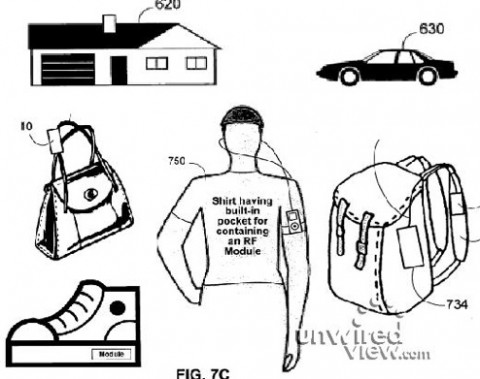Sunday, November 2, 2008
The Internet of Things: More from CNN -Internetting every thing, everywhere, all the time; Sensor networks for the elderly
The Internet of Things has gone mainstream.
Yesterday I posted about David Orban's recent presentation at SHiFT 08: Sensor Networks and Data for the Open Internet of Things, and embeded the video clip, "Why We Need to Listen to our Things". I planned on revisiting this topic in a couple of weeks, but this morning, I came across two related articles that I wanted to share right away.
The first article, Internetting everything, everywhere, all the time, by Cherise Fong, for CNN, discusses the basics, and includes links to additional information about concepts, such as RFID, or Radio Frequency Identity technology, NFC (Near Field Communication), Spime, Nabaztag, Oyster, Octopus, Suica, Mirror, Tikitag, Violet, Mir:ror, ztamps - with links for the tech-curious.
What interested me the most was EEML, or Extended Environments Markup Language, which is "a protocol for sharing sensor data between remote responsive environments, both physical and virtual. It can be used to facilitate direct connections between any two environments; it can also be used to facilitate many-to-many connections as implemented by the web service Pachube, which enables people to tag and share real time sensor data from objects, devices and spaces around the world....Possible end-users range from construction managers, large-building occupants and architects, to electronics manufacturers and interactive artists and designers."
I came across the second related article in this morning's Sunday paper. The Charlotte Observer printed an article by Bob Moos, of the Dallas Observer, about the use of emerging technologies to help the elderly stay in their homes:
Robots, sensors to help elderly stay at home: Devices will detect when residents have sleepless nights or forget to take their medication

Photo via the Charlotte Observer, by Michael Mulvey - MCT Photo
Note: The system is running on Debian
The National Science Foundation and other sources have worked to fund the Heracleia Human-Centered Computing Laboratory at the University of Texas at Arlington. One of the focus of current research is to develop "smart" homes that are embedded with networks of sensors and webcams to support the independence of elderly people, without seeming like the system is an invasion of privacy. This technology, as well as related technologies, will be demonstrated at the Silvers Summit on Saturday, January 10, 2009 at the International Consumer Electronics Show (CES).
Related:
SmartSilvers Alliance
More about David Orban and OpenSpime:
If you are interested in emerging technologies and pervasive computing, you'll find Orban's blog facinating. It is published in English, Italian, and Hungarian. He's involved in several Web 2.0 communities, including Second Life. He is also a member of OpenSpime, where you can read his post that covers the topics in his SHiFT '08 presentation.
Listening to our objects (10/27/08)
Excerpt from post:
"The granularity, frequency, and intensity of the chatter that the spimes in the network perform will be vital, and it will be a fundamental task to be able and reliably translate from their plane of communication to the one of aggregated, second-order knowledge, where we can understand it, where we can derive useful, valuable information which we can act upon!"
OpenSpime:
"OpenSpime is a project of WideTag, Inc., a technology infrastructure company incorporated in California, USA, providing hardware and software solutions for an Open Internet of Things."
"The OpenSpime technology enables individuals, corporations, and governments to better understand the environment surrounding them. A new generation of GPS-enabled sensor networks, based on the open source OpenSpime communication protocol will collect the necessary data, and using scalable server technology, aggreate, manage, and visualize the data collected."

Snail Mail: RFID-enabled real snail, carrying e-mail.
"Our snails are equipped with a miniaturised electronic circuit and antenna, enabling them to be assigned messages. Your message is collected from a despatch centre at one end of their enclosure. Once associated with the tiny electronic chip on the snail's shell your message will be carried around until the snail chances by the drop off point. Here more hardware collects your message and forwards it to its final destination."
Apple's Personal Area Network Systems and Devices patent via SlashGear

IPSO Alliance: Promoting the use of IP for Smart Objects: "Welcome to the launch of the Internet of Things"
"Today, with this association, we are creating the foundation which makes the Internet of Things a reality. We are bringing together companies across the globe with the objective of using IP to interconnect physical objects with the global Internet. Through our Technical Advisory Board we will document, demonstrate and teach how IP can be used in Smart Objects and provide IPSO members with updates on technology standards. This IP Smart Object technology will play an essential role in the challenge to master our energy distribution and consumption, automate our homes and work environments, modernize our cities and satisfy many other market requirements" -Geof Mulligan, Chairman; Patrick Wetterwald, President, JP Vasseur, TAB Chairman
IPSO Alliance FAQ's
RFID Weblog
Ann Galloway's Internet of Things Working Bibliography
Privacy and Security Issues, RFID, and the Internet of Things
As RFID tracking booms, privacy issues loom (Chris Taylor, CNN, 5/11/07)

No comments:
Post a Comment